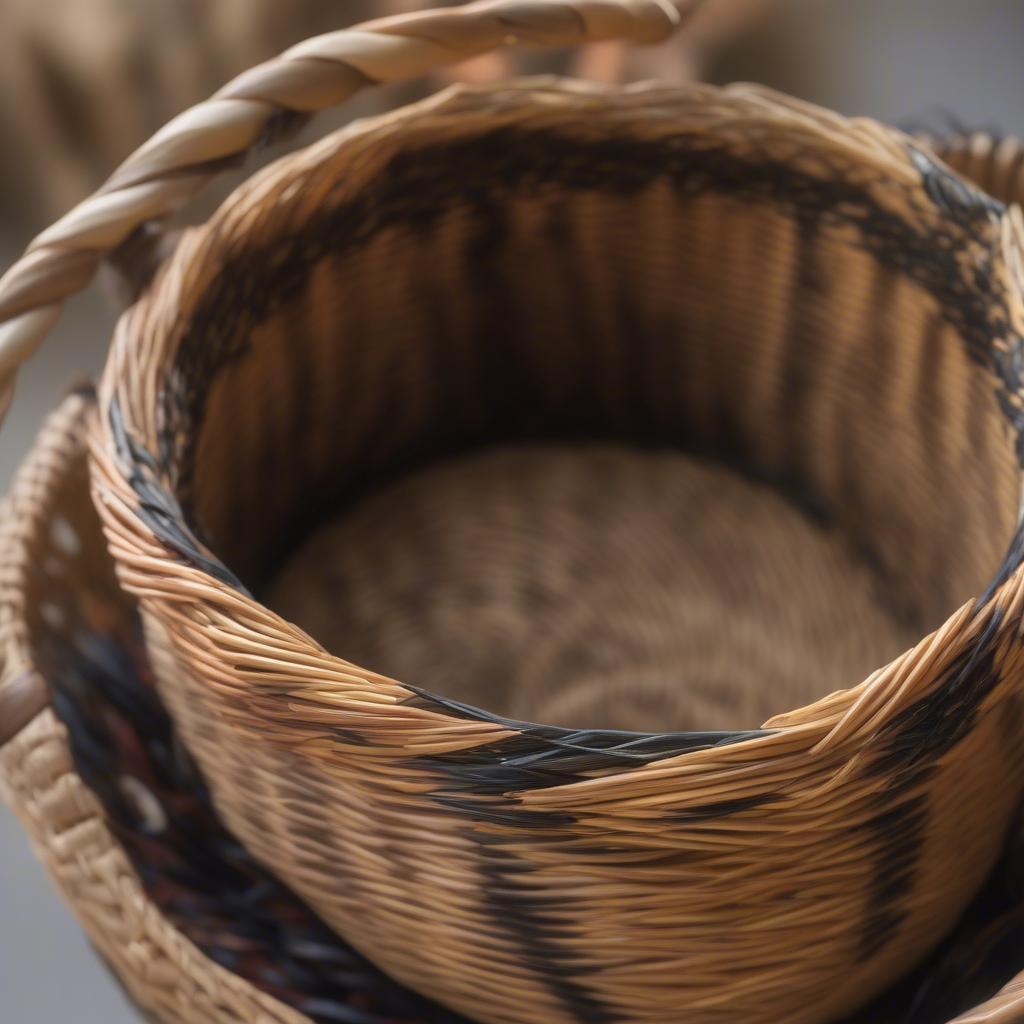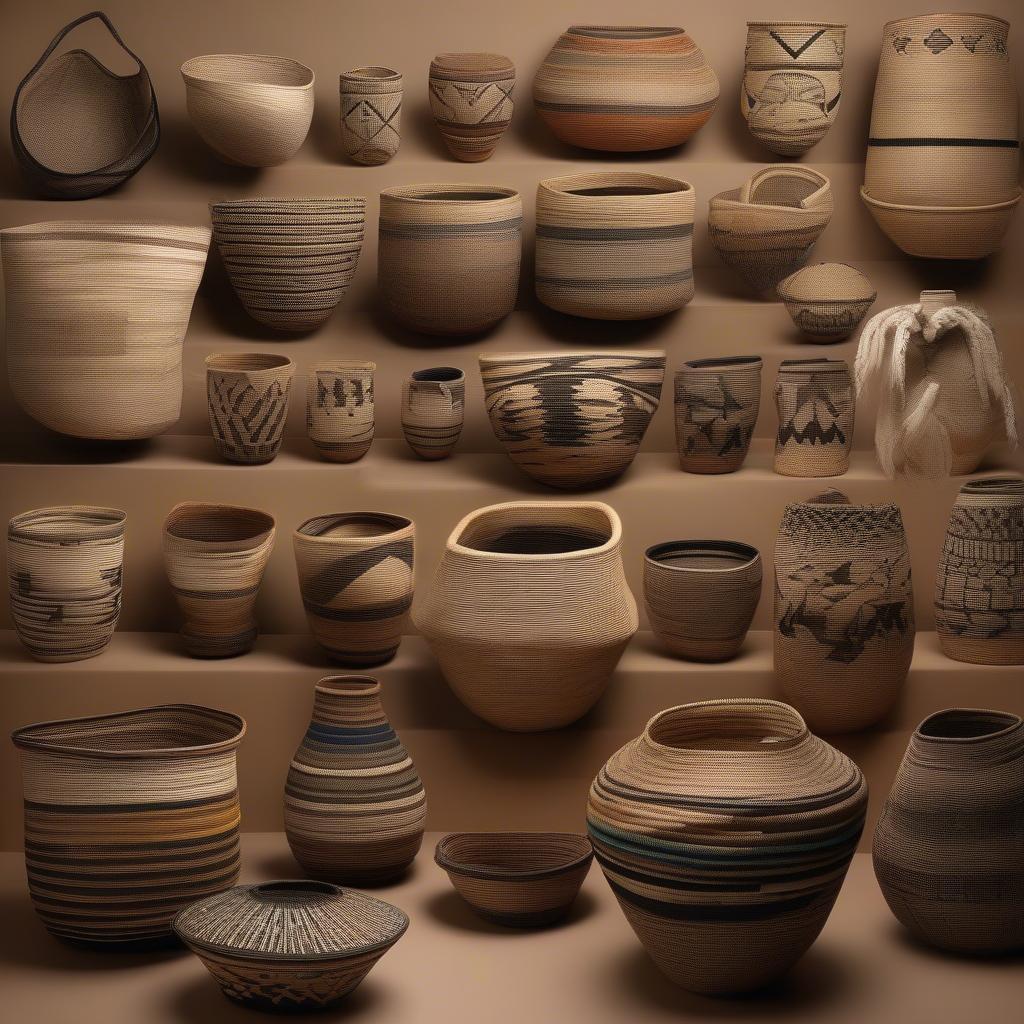Basket Weaving
Discovering the Art of Pima Basket Weaving
Pima Basket Weaving is a centuries-old tradition deeply rooted in the rich cultural heritage of the Akimel O’odham (Pima) people of southern Arizona. These intricate baskets, renowned for their tight weaves and striking geometric designs, are not just functional objects but exquisite works of art that tell stories and connect generations. From the harvesting of the willow and devil’s claw to the meticulous weaving process, each step is imbued with meaning and reflects the deep connection between the Pima people and their land.
The History and Significance of Pima Basket Weaving
Pima basket weaving has evolved over centuries, reflecting the tribe’s adaptation to their desert environment. Originally, baskets served practical purposes, used for storing food, carrying water, and cradling infants. Over time, they developed into highly sought-after art forms, recognized for their technical mastery and artistic beauty. The designs woven into the baskets often represent elements of the natural world – mountains, rivers, clouds, and the distinctive desert plants and animals. These patterns are not simply decorative; they embody the Pima people’s spiritual beliefs and their profound understanding of the interconnectedness of all living things.
Materials and Techniques: From Harvest to Masterpiece
The creation of a Pima basket is a labor of love, beginning with the careful selection and harvesting of materials. Willow branches, gathered along riverbanks, provide the foundation for the basket’s structure. Devil’s claw, a desert plant with a distinctive hooked seed pod, serves as the black dye, creating the intricate patterns that adorn the baskets. The process begins with the preparation of the willow, which is carefully split and soaked to make it pliable. The weaver then meticulously coils the willow, using devil’s claw to secure the stitches and create the designs. This intricate process requires patience, skill, and a deep understanding of the materials.
 Pima Basket Weaving: Devil's Claw and Willow
Pima Basket Weaving: Devil's Claw and Willow
Identifying Authentic Pima Baskets
With the rising popularity of Pima baskets, it’s important to be able to identify authentic pieces. Look for tight, even weaving, intricate designs, and the use of natural materials. Genuine Pima baskets are crafted using traditional techniques passed down through generations. Avoid baskets made with synthetic materials or those that exhibit sloppy workmanship. Purchasing from reputable dealers and galleries specializing in Native American art is crucial to ensuring authenticity and supporting the Pima artisans directly.
“Authenticity is paramount,” explains Dr. Anya Peterson, an expert in Southwestern Native American art. “A genuine Pima basket reflects not just the skill of the weaver, but also the cultural heritage of the Pima people.”
Caring for Your Pima Basket
A Pima basket is an investment in art and culture, and proper care ensures its longevity. Avoid exposing the basket to direct sunlight or extreme temperatures. Dust gently with a soft brush or cloth. If the basket becomes soiled, consult a professional conservator specializing in Native American artifacts for cleaning advice. By treating your Pima basket with care and respect, you’ll help preserve a beautiful piece of cultural heritage for generations to come.
 Contemporary Pima Basket Designs
Contemporary Pima Basket Designs
Conclusion: The Enduring Legacy of Pima Basket Weaving
Pima basket weaving is more than just a craft; it’s a living tradition that connects the past to the present. By appreciating the artistry and cultural significance of these beautiful baskets, we contribute to the preservation of a vital part of Pima heritage. From the meticulous harvesting of materials to the intricate weaving techniques, each Pima basket tells a story of resilience, creativity, and a deep connection to the land. So, whether you are a seasoned collector or simply admire the beauty of handmade crafts, explore the world of pima basket weaving and discover the rich cultural tapestry it represents.
FAQ
-
What materials are used in Pima basket weaving?
Primarily willow and devil’s claw. -
How can I tell if a Pima basket is authentic?
Look for tight weaving, natural materials, and intricate designs. Purchase from reputable dealers. -
How do I care for my Pima basket?
Avoid direct sunlight and extreme temperatures. Dust gently with a soft brush. Consult a conservator for cleaning. -
What is the significance of the designs on Pima baskets?
They represent elements of the natural world and embody the Pima people’s spiritual beliefs. -
Where can I buy authentic Pima baskets?
Reputable galleries and dealers specializing in Native American art.
“The stories woven into these baskets are a testament to the enduring spirit of the Pima people,” adds Maria Garcia, a renowned Pima basket weaver. “Each basket is a connection to our ancestors and a legacy for future generations.”
Need assistance? Contact us at Hanoi, Vietnam or Tech Avenue, Suite 12, San Francisco, CA 94105, USA. We have a 24/7 customer service team.
